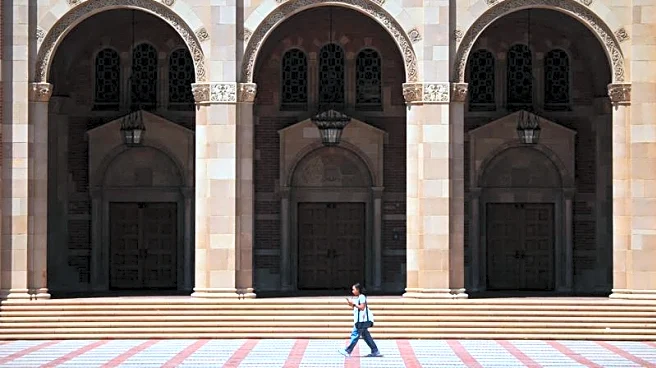What's Happening?
A recent report by Allen Matkins and UCLA reveals that over a third of California developers have postponed or canceled commercial real estate projects due to escalating costs and tariff uncertainties. The report highlights that while industrial and multifamily projects show strong prospects, office and retail sectors face uneven growth and tighter financing conditions. Developers are prioritizing projects with the highest demand as economic pressures reshape the market. The survey indicates that office sentiment remains low, with only a small percentage of developers planning new projects in Southern and Northern California.
Why It's Important?
The delay in commercial real estate projects in California underscores the broader economic challenges facing the construction industry. Rising costs and tariff uncertainties are significant barriers, affecting the viability of new developments. This situation could lead to a slowdown in economic growth and job creation in the state. However, the strong demand for industrial and multifamily developments suggests a shift in focus towards sectors that are more resilient to current economic pressures. This trend may influence future investment strategies and urban planning decisions.
What's Next?
As developers navigate these challenges, there may be an increased interest in innovative solutions such as office-to-industrial conversions to meet the demand for industrial space. The multifamily sector is expected to continue growing, driven by the demand for rental properties with work-from-home amenities. Developers and investors will likely focus on projects that offer the best returns in the current economic climate, potentially leading to a more selective and strategic approach to real estate development.
Beyond the Headlines
The report highlights a potential shift in the commercial real estate landscape, with mixed-use and specialty projects gaining favor over traditional office and retail developments. This could lead to a transformation in urban environments, with more emphasis on creating versatile spaces that cater to diverse needs. Additionally, the focus on sustainability and amenity-rich developments may drive innovation in building design and construction practices.













